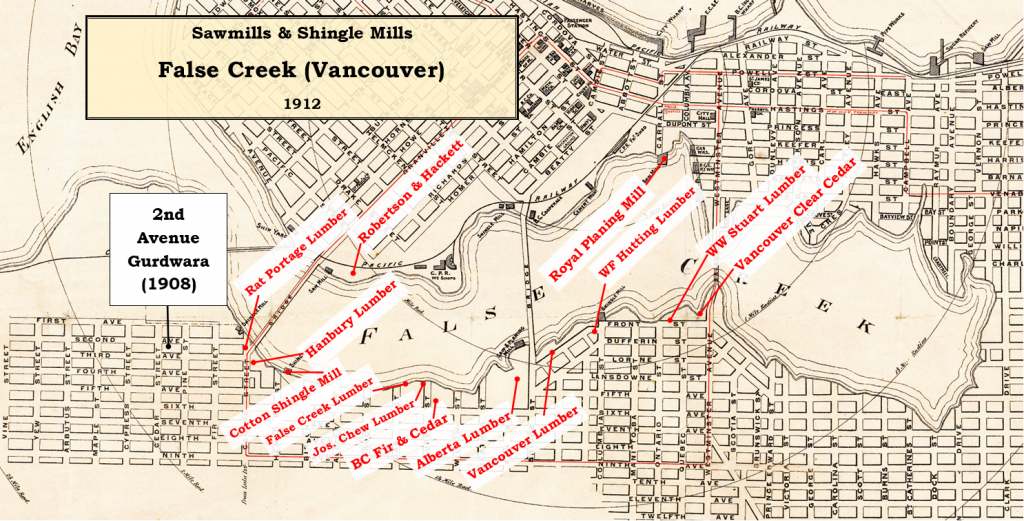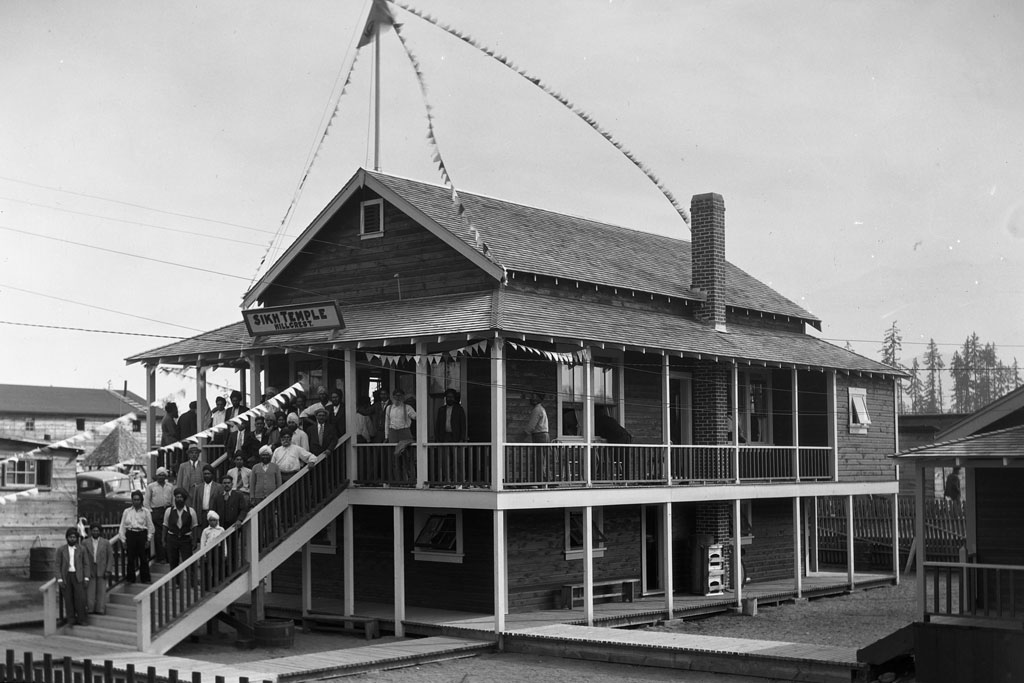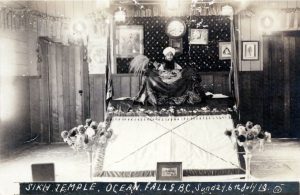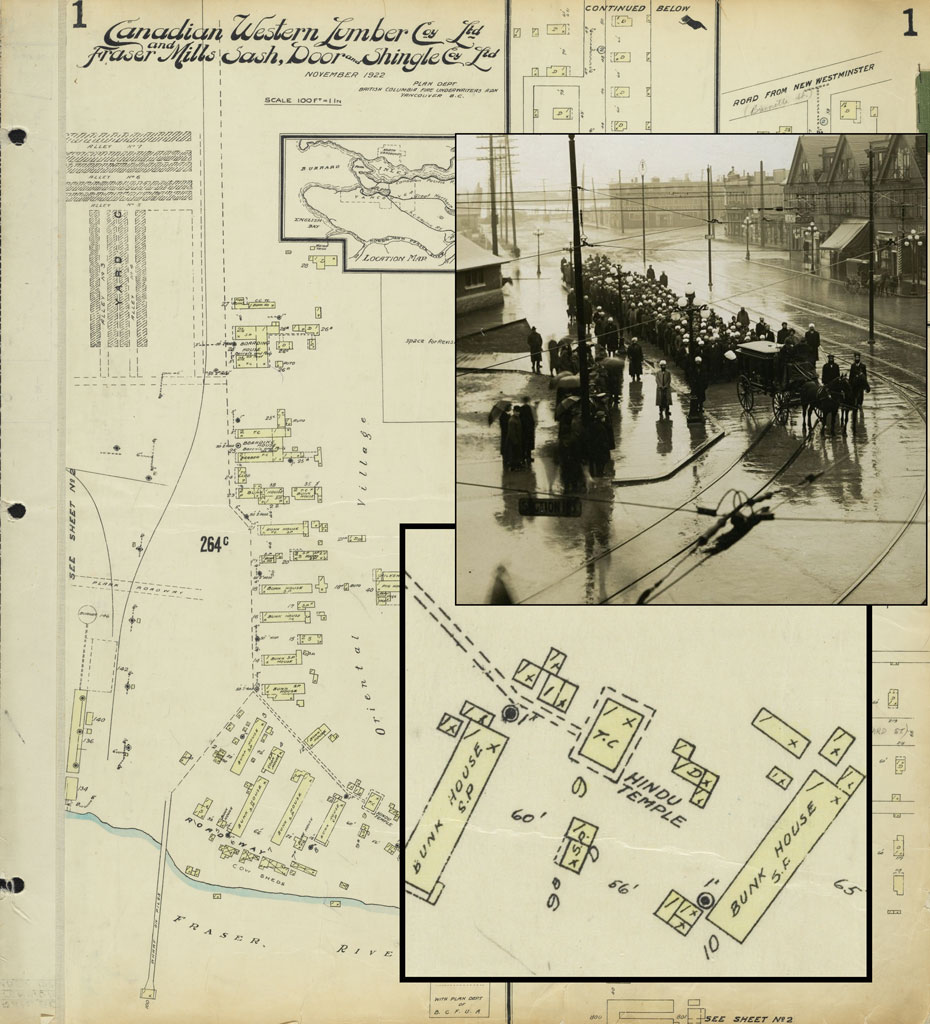The Vancouver Khalsa Diwan Society was founded in 1906 to support the expansion of Sikh religious establishments. From the beginning, both the organization and its members had strong ties to the lumber industry, progressive organizations and the labour movement.
Sikh settlers often went to the Gurdwara upon arrival to seek support and help in finding employment. Financial and spiritual help extended by the Khalsa Diwan Society was deeply linked to the Punjabi Sikhs cultural traditions. Sewa and Langar, concepts of taking care of people, providing food, and other supports were important to establishing new lives for South Asian Canadians.
“Wherever there are five or more Sikh’s there will be a Sikh Temple, even just a spare room in someone’s house. Therefore it was only natural that once the mill and bunkhouses were erected the next building should be a Temple.” [1]

Similarly, the Ross Street Gurdwara (established 1970) on Marine Drive in South Vancouver was close to mills along the Fraser River.

“…the reason why the temple was located at Hillcrest in particular was it was located right next to the sawmill. And thinking about it later on, as I got older, it was apparent that in order to attract workers to the area to retain them, the Stone family, which owned the mill, felt that they should build a Gurdwara there. And and so it was a general way to keep workers there… Back then, there wasn’t a lot of family reunification going on. And so a lot of the men would live in the bunkhouses that surrounded the Gurdwara. And I still remember that if you like to think of it as a centre, there were spokes, wooden sidewalks that would take you to the bunkhouses…” [2]


- Joan Mayo in "Paldi: Town Soaked in Sikh History". (2018). Desi Today Magazine. (E-magazine). https://www.desitoday.ca/paldi-town-soaked-in-sikh-history/ ↵
- Moe Sihota, interview by Anushay Malik, May 14, 2021. Union Zindabad! Interview Collection, BC Labour Heritage Centre, ↵
